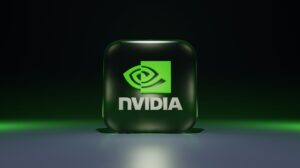Today’s customers expect brands to truly understand what they like, what they need, and how they prefer to connect. Meeting those expectations takes more than guessing; it requires precision and honest insights.
That’s where AI-powered knowledge graphs come in. These tools help businesses gather and make sense of massive amounts of data, creating complete pictures of their customers. The result? More meaningful interactions that build loyalty and keep customers coming back.
Personalization can make or break a business. Companies are under increasing pressure to use their data wisely, but turning raw data into valuable insights is no simple task.
Knowledge graphs offer a way to break through all the noise by connecting scattered information and making it work together. They help businesses better understand customer preferences and behaviors, allowing them to create experiences that truly resonate.
Making sense of data
Fragmented data is frustrating, and everyone has felt it. Customer information often becomes scattered across different systems, making it hard to see the whole picture. Knowledge graphs solve this problem by combining the disconnected pieces into one clear source of information about customers’ preferences, histories, and behaviors.
For example, picture a retailer using a knowledge graph to bring together data from online searches, in-store purchases, and loyalty programs. By connecting all these dots, the retailer gets a better idea of what their customers want and cater to that. This deeper understanding helps them make smarter decisions and create more personalized, meaningful experiences for their shoppers.
Driving personalization through intelligent insights
Personalization is not optional — it is expected. In this area, AI-powered knowledge graphs excel by uncovering patterns and relationships within the data. Understanding how customers interact with products and services helps businesses make recommendations uniquely tailored to individual needs.
Take streaming platforms, for example. Knowledge graphs help services like Netflix to suggest shows and movies based on viewing history, preferences, and even trends from similar users. The same principle applies to e-commerce platforms, where product recommendations are informed by previous purchases or browsing activity. These personalized suggestions do more than boost the customer service experience; they make customers feel seen.
Customer service makes customers feel good by building their feelings on understanding and understanding, creating knowledge-creating graphs, and providing lasting connections to the brand achieved.
Envision chatbots or virtual telecom assistant providers. These assisting systems offer customers precise and personalized technical support issues. A drawing from a chatbot powered by a knowledge graph could analyze account history, previous support interactions, and technical diagnostics in real time to provide a tailored solution. This level of service not only resolves problems efficiently but also fosters trust and satisfaction.
Mapping seamless customer journeys
The customer journey is crucial for creating seamless experiences, and knowledge graphs offer businesses a bird’ s-eye view of opportunities to improve interactions and personalization.
Take all touchpoints and travel, enabling the company to track a customer’s interactions — from browsing flights to booking hotels and activities. The company can connect these data points to recommend relevant services, such as discounted car rentals or curated itineraries, to enhance the overall travel experience. This level of customization strengthens the customer relationship and encourages repeat business.
Staying ahead in a competitive market
In a crowded marketplace, businesses that adopt knowledge graphs have a significant advantage. These tools enable organizations to unlock the full potential of their data and develop unique experiences. Knowledge graphs’ scalability also means businesses can continually refine their personalization efforts as customer expectations change.
Industries such as retail, hospitality, and financial services are already doing this to some extent by utilizing knowledge graphs to meet the demand for seamless and personalized journeys. Adopting knowledge graphs isn’t just an advantage as competition grows — it’s becoming essential.
Navigating ethical challenges
The system’s power requires vast AI-powered amounts of knowledge of graphs that don’t have data, raising questions about privacy and security. Businesses must handle customer information transparently and ethically, adhering to strict data governance practices.
Furthermore, the effectiveness of a knowledge graph depends on the quality of the data it processes. Recommendations based on inaccurate or incomplete information can ruin customer trust. To prevent this, organizations must ensure that their data is regularly updated and accurately validated.
The road ahead
Technology is evolving, and so are the capabilities of AI-powered knowledge graphs. Real-time data integration and advanced natural language processing are some areas where advancements and developments, alongside likely ethical practices, will focus on achieving an even greater position to meet tomorrow’s customers’ personalization and precision needs.
Knowledge businesses that take graphs based on AI are changing the way businesses communicate with their customers. They assist in recommending products or services. Based on the available implementation data, these enabling systems present personalized recommendations for challenging customers, improving data customer management interaction and ethics, and enhancing the customer outcome, which is clear: understanding customers and forming strong relationships with them.
The future of customer experience is here, and knowledge graphs are leading the way. Businesses that invest in this technology today will be prepared to succeed in an increasingly customer-oriented world.





